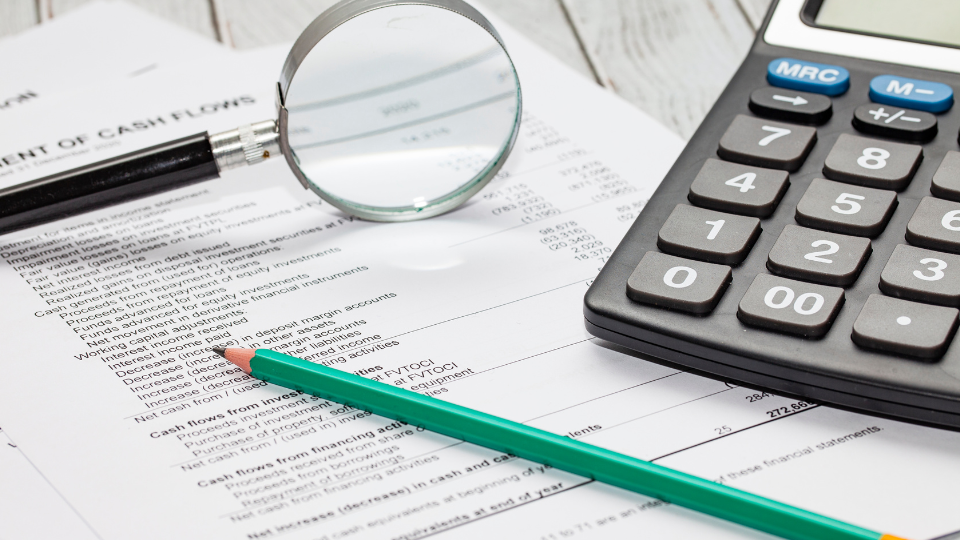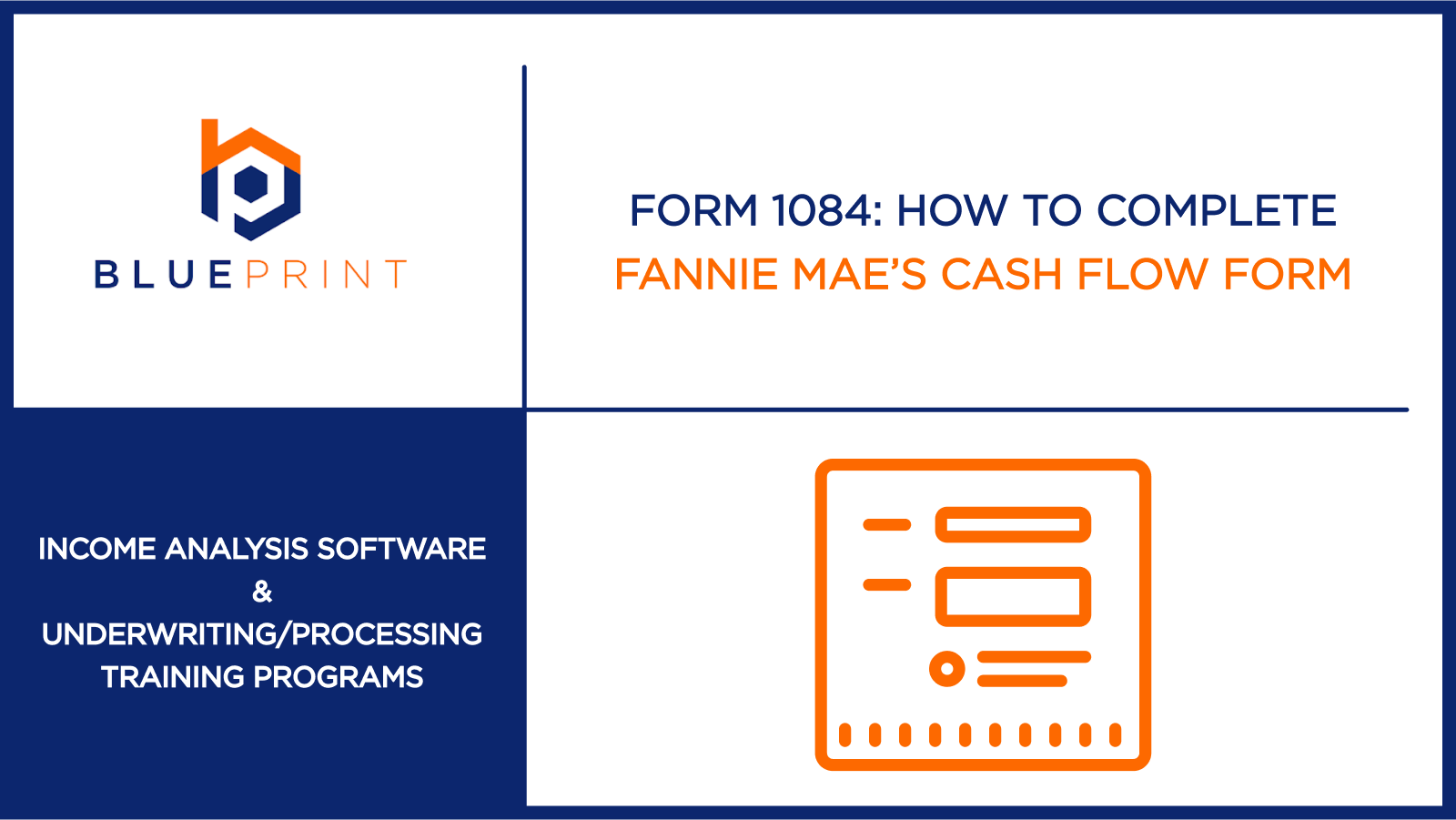For lenders and underwriters, evaluating self-employed borrower income is one of the most complex parts of mortgage origination. Fannie Mae’s Form 1084 is a standardized tool used to calculate and document qualifying income based on tax return data—but completing it accurately can be time-consuming, error-prone, and highly manual.
This article breaks down the components of Form 1084, offers a step-by-step guide to completing it in line with Fannie Mae’s expectations, and highlights how automation tools like IncomeXpert can reduce errors, ensure compliance, and streamline your underwriting workflow.
Main takeaways from this article:
- Fannie Mae’s Form 1084 is essential for assessing the cash flow of self-employed borrowers but can be intricate to fill out.
- Employing best practices, like separating forms for different businesses and using automation, ensures precision and efficiency.
- Thorough review and automation are key for accurate submissions and maximized rep and warrant relief.
- IncomeXpert enhances this process by automating income calculations, minimizing manual errors, and integrating seamlessly with FNMA’s tools.
What is Form 1084 (cash flow analysis form)?

Form 1084 is a standardized cash flow analysis form used primarily to evaluate the income of self-employed borrowers. It plays a pivotal role in helping lenders analyze cash flow, make necessary net income adjustments, and identify allowable add-backs for determining qualifying income.
This form is essential for underwriters and loan officers, as it provides a snapshot of a borrower’s financial health, enabling informed lending decisions.
You can download Form 1084 directly from Fannie Mae here.
Who uses Form 1084?

The following professionals frequently use Form 1084 in the mortgage process to make accurate income assessments:
Lenders and underwriters
This group is responsible for completing Form 1084 to calculate qualifying income for self-employed borrowers. The form supports consistent cash flow analysis, allows for proper income adjustments, and helps ensure compliance with Fannie Mae guidelines.
Loan officers and processors
These team members assist with verifying income documentation, gathering supporting tax forms, and reviewing figures for accuracy before underwriting. Their role helps streamline the process and prevent delays related to incomplete or inconsistent data.
Step-by-step guide to completing Form 1084

Accurately completing Form 1084 requires a structured approach to ensure accuracy and compliance. Here’s a step-by-step guide to get it right:
1. Gather necessary tax forms
Before you start filling out Form 1084, make sure to collect the following tax documents to gather comprehensive and accurate income data for an accurate cash flow analysis:
- IRS Form 1040: This individual income tax return form provides a comprehensive overview of an individual’s income, deductions, and credits.
- Schedule B: This form documents any interest and dividends earned, which are critical for an accurate income assessment.
- Schedule C: This form reports profit or loss from a business and is mainly used by sole proprietors to report income and expenses related to their business.
- Schedule E: This form captures rental income and income from partnerships, S corporations, estates, and trusts.
- Schedule K-1 (Form 1065 or 1120S): This form filed with the Internal Revenue Service (IRS) details each partner’s or shareholder’s share of income, deductions, credits, etc.
- IRS Form 1099: This form is essential for documenting payments made to independent contractors or freelancers.
Additional information may be required depending on the specific lender and loan type, so it’s best to consult with your loan officer.
2. Identify business income sources
It’s crucial to review a borrower’s tax returns for details to determine the specific type of business income they earn.
Look for Schedule C to verify sole proprietorship income, examine Schedule E for rental income, and assess K-1 forms for pass-through business earnings from partnerships or S corporations. Identifying the correct income sources ensures accurate analysis for Form 1084 completion.
3. Apply income adjustments correctly
When applying income adjustments, accurately account for depreciation, nonrecurring expenses, self-employment wages, and rental income to reflect the borrower’s true cash flow. Here’s how to approach each component:
- Since depreciation is a non-cash expense, add it back to the borrower’s income. Make sure the figures align with the amounts reported on the tax returns.
- Exclude any one-time/nonrecurring expenses from the overall cash flow calculation, as these are irregular and do not typically affect future income. However, ensure these are clearly identified and documented as nonrecurring.
- Adjust for self-employment wages by verifying the accuracy of payments made to the borrower from their own business, as indicated by their EIN.
- Calculate the rental income by first confirming the figures on IRS Form 1040 Schedule E, incorporating any allowable expenses and vacancy factors, and then applying Fannie Mae’s rental income guidelines to determine net rental earnings.
4. Calculate qualifying income
Form 1084 is essential for converting adjusted income into qualifying income. Input your adjusted figures accurately, referencing sections for business income, depreciation, amortization, and any nonrecurring items. Focus on identifying recurring income sources and separate them from nonrecurring occurrences.
The total net cash flow is calculated after all deductions and adjustments, leading to the figure that represents qualifying income for the mortgage application process. Many lenders also offer programs or resources that assist borrowers in optimizing their income documentation for loan applications.
5. Review and verify final income calculations before submission
Before submitting Form 1084, it is vital to thoroughly review and verify all calculations. This final check helps ensure that no errors have been made in evaluating the borrower’s income.
- Double-check all entries by comparing Form 1084 with supporting tax documents.
- Recalculate totals and subtotals for accuracy.
- Ensure income figures are consistent across all tax forms.
- Confirm compliance with Fannie Mae’s guidelines for adjustments and calculations.
- Verify that all income figures are backed by sufficient documentation.
Best practices for using Form 1084 efficiently

To ensure accuracy and streamline the completion of Form 1084, consider the following best practices:
Use separate forms for multiple businesses
For accurate income trending and analysis, create separate Form 1084s for each business or income source. This prevents “lump sum” calculations that obscure the stability of individual income streams, which is vital for underwriting.
Each business should have its own cash flow form, ensuring a detailed and accurate evaluation of income stability and continuity. This approach is crucial for meeting FNMA/FHLMC guidelines, which require each income source to be thoroughly analyzed on its own merits.
Use the SAM (Schedule Analysis Method) instead of AGI
To complete Form 1084, the Schedule Analysis Method (SAM) is more efficient than the Adjusted Gross Income (AGI) method. While some mortgage professionals may still use the older AGI approach, SAM is designed to streamline the process and reduce errors.
SAM focuses on including only the income that will be utilized for the analysis, whereas AGI requires listing all income and subtracting what is unnecessary, introducing the potential for mistakes and delays. By adopting SAM, you can improve accuracy and save time on income calculations.
Double-check recurring vs. nonrecurring income
Recurring income refers to income that is expected to continue over time, such as salaries, consistent business profits, or rental income received consistently. In contrast, nonrecurring income includes one-time sources, such as bonuses, sporadic contract work, or the sale of assets.
Properly categorizing each income type ensures that the qualifying income presented in Form 1084 reflects a true financial picture.
Verify EINs for self-employment wages
Confirm the Employer Identification Numbers (EINs) associated with their businesses match the income reported to establish the legitimacy of the income source and ensure compliance with regulations.
This step safeguards against potential misrepresentations and strengthens the overall integrity of the income assessment.
Ensure rental and investment income is calculated correctly
Account for rental and investment income that may reduce net earnings. When calculating rental income, lenders should take net operating income (income after expenses) into account for a realistic assessment.
Similarly, investment income must also reflect any typical expenses associated with managing and maintaining those investments.
Don’t double-count distributions from partnerships/S corps
Avoid double-counting distributions from partnerships or S corporations as income, as this could lead to inaccuracies on the mortgage paperwork and flag you for attempted mortgage fraud.
If distributions are already reflected in the business income reported on Schedule C, listing them again can inflate the borrower’s qualifying income and lead to inaccuracies. Keeping meticulous records can help prevent issues in this area.
Use automation to prevent human error
Manually completing Form 1084 can be a lengthy and complex process, often leading to calculation errors and inconsistencies. The likelihood of mistakes increases significantly with so many figures to enter and adjustments to make.
The Fannie Mae Income Calculator helps standardize income calculations for self-employed borrowers and supports rep and warrant relief—but it still relies on manual data entry, which can introduce inconsistencies or delays.
How IncomeXpert enhances Form 1084 automation
IncomeXpert builds on the foundation provided by Fannie Mae’s Income Calculator by automating tax document extraction, income calculations, and compliance checks. Instead of manually keying in data, lenders can rely on IncomeXpert to pull and analyze information directly from tax returns, saving time and improving accuracy. Here’s how:
Extracts tax return data and calculates income automatically
IncomeXpert automates the extraction of tax return data, eliminating the need for manual entry. This speeds up the process and greatly reduces the risk of calculation errors, enhancing the overall accuracy of income assessment.
Seamlessly integrates with FNMA’s Income Calculator
The platform enables users to harness Fannie Mae’s Income Calculator’s advanced functionalities without duplicating data entry, streamlining workflows and enhancing productivity.
Processes full loan files, not just individual income sources
Unlike tools that focus on individual income sources, IncomeXpert processes complete loan files, ensuring all relevant income types and factors are considered. This comprehensive approach delivers a more thorough and reliable income evaluation.
Expands rep and warrant relief to all income types
IncomeXpert provides expanded rep and warrant relief across all income types, offering lenders greater security and confidence in their approvals while simplifying the overall underwriting process.
Submits verified income data directly to Fannie Mae
IncomeXpert allows for the direct submission of verified income data to Fannie Mae, ensuring a streamlined underwriting experience. This feature reduces paperwork and expedites loan processing times, benefiting both lenders and borrowers.
Simplify self-employed income calculations with IncomeXpert
The Fannie Mae Form 1084 is the key to accurately evaluating income for self-employed borrowers. However, completing the form manually can be time-consuming and prone to errors.
IncomeXpert automates data extraction, income calculation, and submission by integrating with Fannie Mae’s tools and processing full loan files. This eliminates manual data entry and enhances accuracy, giving lenders greater confidence in their income assessments.
To elevate your self-employed income assessment, request a demo today!


5 Responses
Hi Michael,
can you demonstrate how to use the Liquidity Work Sheet for K-1?
Hi Carmen
Yes i could do a blog on the liquidity tests, give us a few weeks to assemble it and we will put it out, stay tuned to the blogs!
Can you explain why we are required to subtract “Mortgages or notes that are payable in less than one year” from borrower income(2016). If the mortgage/notes are not due until next year(2017), why do we hit the borrower for the debt the year of tax return year(2016)? Wouldn’t it be part of the business expense for 2017 and it will reflect on the 2017 tax returns as expense?
Hi Willie
Thanks for your post, for mortgage notes and bonds these can not be deducted as expeneses. The reason being is that if you borrower money it is not counted as income, so when you pay back the funds it is also not an expense. For example if you buy a high end copier for your business for $!0,000 and use a short term loan to fund it, what goes on a business expense report? The answer is only the allowable deductions for the equipment , you would not claim the $10,000 loan as income to purchase the equipment, you can only deduct some of the cost of the printer itself. So when a business has loans to repay those are not reflected as deducted from their bottom line, because of this the agencies need you to deduct loans that are due from their bottom line UNLESS you use one of the two allowable methods described in my most recent blog about notes,mortgages, bonds due in less than one year
Thanks for the questions!
Michael Whitbeck
For the mortgages, note, due and payable. you said if line 2b D shows enough assets, we can subtract line 17d.
Why can we use the combination of lines 1d, 2bd, and 3d. Those are all assets that you would use when completing the business liquidity test. How would it differ in this scenario?